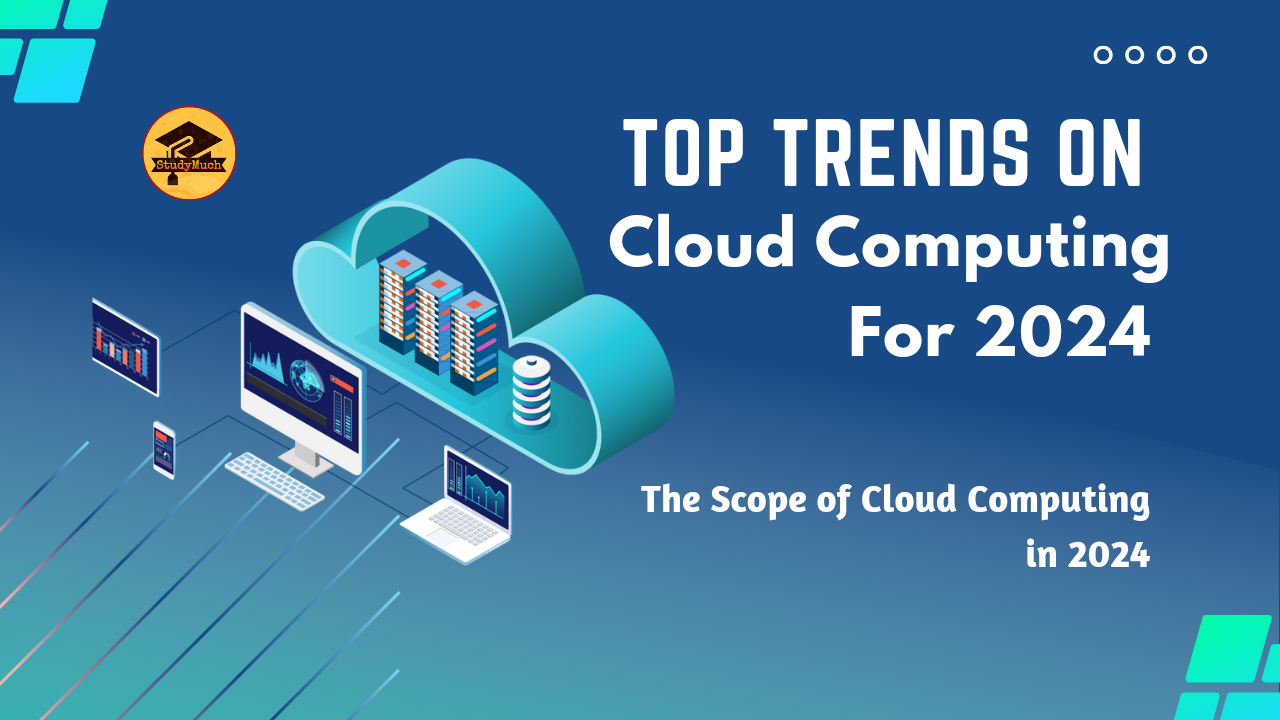Top Trends in Cloud Computing for 2024

Top Trends in Cloud Computing for 2024
In the fast-paced world of Technology, Cloud Computing continues to be a driving force behind innovation and efficiency. As we move into 2024, several trends are reshaping the cloud computing landscape, impacting the way businesses operate and the way individuals interact with digital services. In this blog post, we will explore the top trends that are set to define the scope of cloud computing in 2024 and beyond, (Top Trends in Cloud computing for 2024).

Edge computing dominance:
Edge computing is rapidly gaining prominence as one of the leading trends in cloud computing. Unlike traditional cloud architectures that centralize data processing in large data centers, edge computing involves processing data closer to the source, reducing latency and improving real-time data processing capabilities. This trend is especially important for applications such as IoT devices, autonomous vehicles, and augmented reality, where instantaneous data analysis is essential.
- Business Impact: Edge computing enables businesses to enhance their operational efficiency, deliver faster services, and reduce dependence on centralized data centers.
AI integration in cloud services:
Artificial intelligence (AI) is increasingly being integrated with cloud computing services, leading to the development of AI-powered cloud solutions. Cloud platforms are now equipped with strong AI capabilities, enabling businesses to leverage machine learning, natural language processing, and computer vision for better decision making and automation.
- Business Impact: AI-integrated cloud services empower organizations to extract valuable insights from data, automate repetitive tasks, and deliver personalized user experiences, ultimately driving innovation and competitiveness.

Quantum Computing in the Cloud:
While quantum computing is still in its infancy, the cloud is expected to play an important role in making this powerful technology accessible. Cloud providers are beginning to provide quantum computing services, allowing businesses to experiment with quantum algorithms and harness the potential of quantum computing to solve complex problems.
- Business Impact: Quantum computing in the cloud promises to solve problems that are currently difficult to solve with classical computing, potentially revolutionizing industries such as finance, healthcare, and logistics.
Zero Trust Security Architecture:
With the increasing frequency and sophistication of cyber threats, security remains a top concern in cloud computing. The Zero Trust Security model, which assumes that no entity, whether inside or outside the organization, should be trusted by default, is gaining traction. This approach involves continuous verification of the identity and security posture of users and devices accessing cloud resources.
- Business Impact: Implementing a Zero Trust Security Architecture helps businesses strengthen their defense against cyber threats, safeguard sensitive data, and ensure compliance with regulatory standards.
Multi-Cloud and Hybrid Cloud Strategies:
As businesses seek flexibility, elasticity, and cost optimization, multi-cloud and hybrid cloud strategies are becoming standard practices. Organizations are leveraging multiple cloud providers to strategically distribute workloads or combining on-premises infrastructure with public and private clouds.
- Business Impact: Multi-cloud and hybrid cloud strategies enable businesses to avoid vendor lock-in, increase redundancy, and optimize costs by choosing the best-suited cloud environment for each workload.
Conclusion:
The Cloud Computing landscape in 2024 is marked by the convergence of cutting-edge technologies, driving unprecedented innovation and efficiency. Edge computing, AI Integration, Quantum Computing, Zero Trust Security and Multi-Cloud strategies are reshaping the way businesses operate and individuals experience Digital Services. Adapting to these trends will be important for organizations looking to remain competitive and agile in a constantly evolving technology landscape.
Learn More;
- What is Cloud Computing?
- What is Quantum Computing?
- Top Trends in Cloud computing for 2024.
- Questions Answers of Cloud Computing

0 Comments